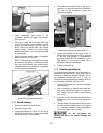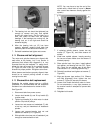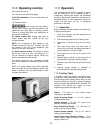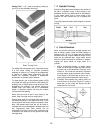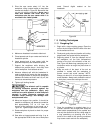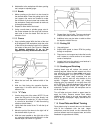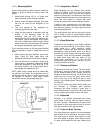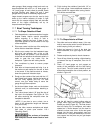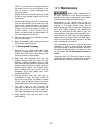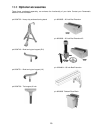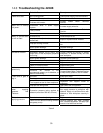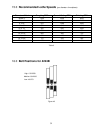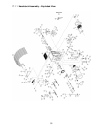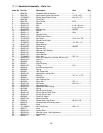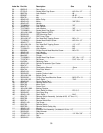
28
(NOTE: Try to make one, very light continuous
movement from the rim to the bottom of the
bowl to ensure a clean, sweeping curve
through the piece.
Should there be a few small ridges left, a light
cut with a large domed scraper can even out
the surface.)
7. Develop wall thickness at the rim and maintain
it as you work deeper into the bowl (Once the
piece is thin toward the bottom, you cannot
make it thinner at the rim). When the interior is
finished, move the tool support to exterior to
re-define bottom of bowl. (General rule of
thumb: the base should be approximately 1/3
the overall diameter of the bowl).
8. Work the tight area around faceplate or chuck
with 1/4" bowl gouge.
9. Begin the separation with a parting tool, but do
not cut all the way through yet.
11.7.3 Sanding and Finishing
1. Remove the tool support and adjust lathe
speed to approximately 500 RPM. Higher
speeds can build friction while sanding and
cause heat check in some woods.
2. Begin with fine sandpaper (120 grit) and
progress through each grit, using only light
pressure. Coarser sandpaper tends to leave
deep scratches that are hard to eliminate. Use
power-sanding techniques to avoid concentric
sanding marks around your finished piece.
Avoid rounding over the rim and foot with
sandpaper; try to keep details crisp. Finish
sanding with 220 grit.
3. Remove sanding dust with tack rags or
compressed air and, with lathe turned off,
apply first coat of finish. Let stand for several
minutes, wipe off excess. Allow to dry before
sanding again with 320 or 400 grit sandpaper.
4. Turn lathe back on and continue the
separation cut almost all the way through the
base. Stop at about 3" and use a small fine
tooth saw to separate the bowl from the waste.
5. Apply second finish coat and allow to dry
before buffing.
12.0 Maintenance
Before doing maintenance on
the lathe, disconnect it from electrical supply by
pulling out the plug or switching off main switch.
Failure to comply may cause serious injury.
Maintenance on the 4224B Lathe should be
performed at periodic intervals to ensure that the
machine is in proper working order, that all
fasteners are tight, and all necessary adjustments
have been made. Inspection and maintenance
should be performed at least twice a year, but
more frequently if the lathe receives constant use.
Clean and oil the lathe bed(s) so that headstock,
tailstock and tool support base will slide easily.
Clean any rust spots that may develop on the bed
with a commercial rust remover.
Use compressed air to blow out the interior of the
headstock, in order to keep sawdust and chips
from accumulating on belts and sheaves. Also blow
off debris that accumulates in the motor fan, and
on the inverter. Do not disassemble inverter to
clean!
Frequently clean out the morse tapers on both
headstock and tailstock. Commercially available
taper cleaners may be acquired from tool stores.



